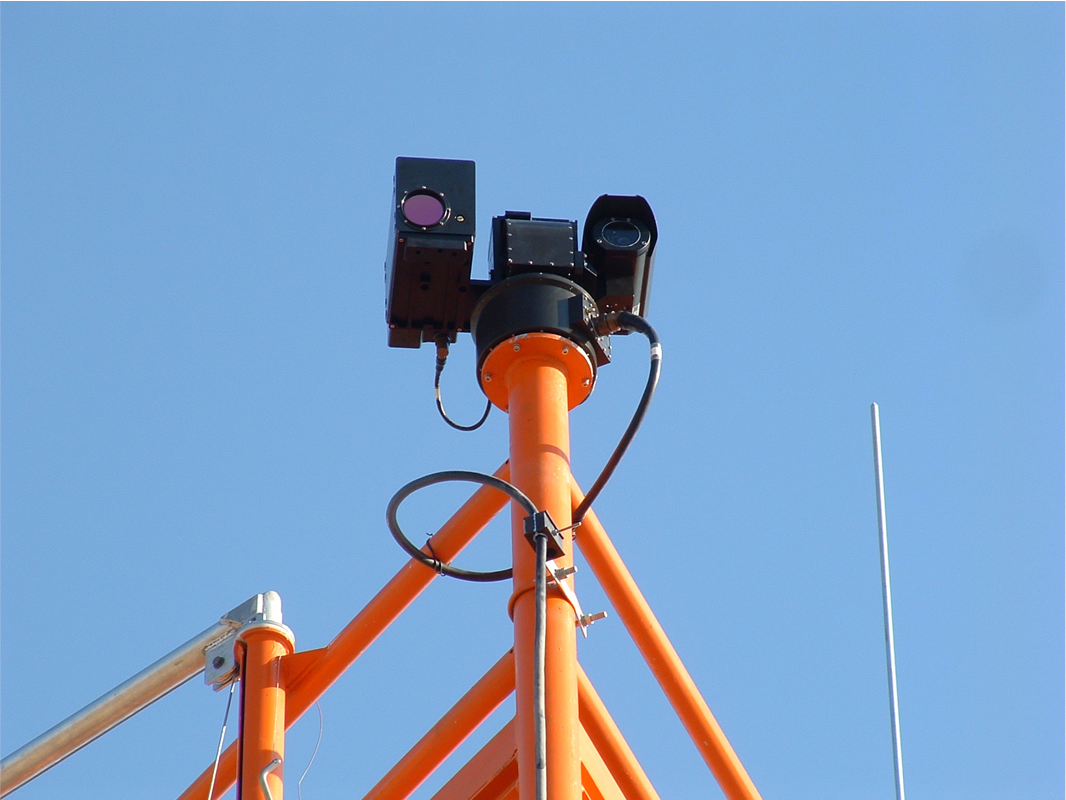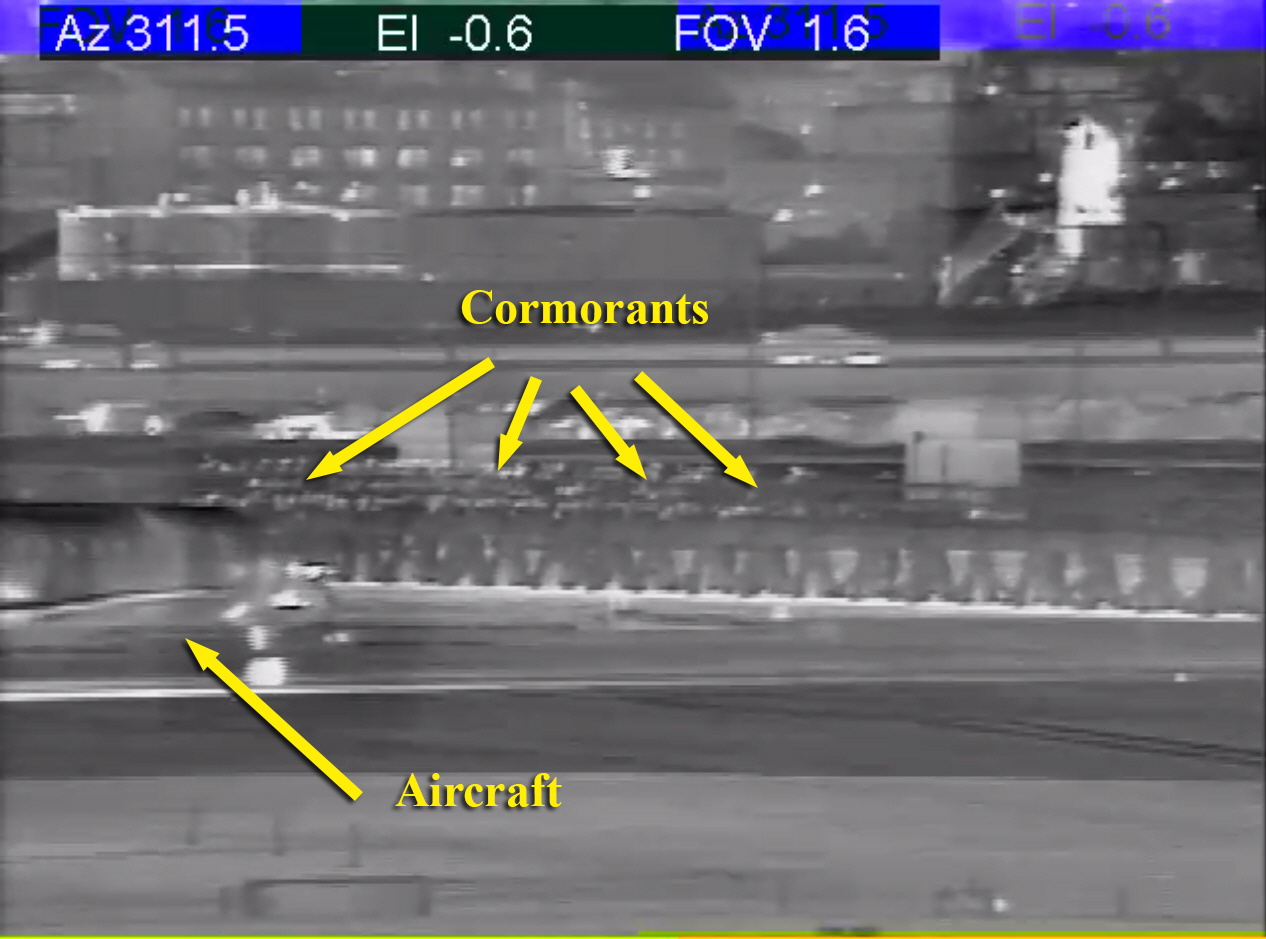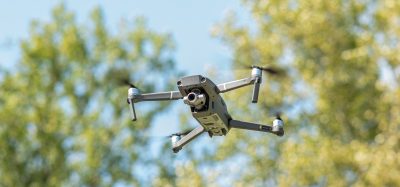Preventing the next ‘Miracle on the Hudson’
- Like
- Digg
- Del
- Tumblr
- VKontakte
- Buffer
- Love This
- Odnoklassniki
- Meneame
- Blogger
- Amazon
- Yahoo Mail
- Gmail
- AOL
- Newsvine
- HackerNews
- Evernote
- MySpace
- Mail.ru
- Viadeo
- Line
- Comments
- Yummly
- SMS
- Viber
- Telegram
- Subscribe
- Skype
- Facebook Messenger
- Kakao
- LiveJournal
- Yammer
- Edgar
- Fintel
- Mix
- Instapaper
- Copy Link
Posted: 26 January 2015 | Dr Nicholas B Carter, World Birdstrike Association
Six years after the miraculous ditching of US Airways Flight 1549 in the Hudson River, Pharovision and New York’s LaGuardia Airport (LGA) are trialling a new avian infrared detection system. Dr Nicholas Carter of the World Birdstrike Association explains how the system is designed to prevent a repeat of the bird strike that brought down the Airbus A320 on departure less than seven kilometres from the airport…
The trial, which the US Federal Aviation Administration (FAA) is monitoring in order to decide whether to further study the technology, consists of a new automated infrared bird detection system that helps prevent collisions between aircraft and birds utilising the same airspace. LGA was the airport from where US Airways Flight 1549 took off six years ago, only to strike a flock of geese over the Bronx less than three minutes after leaving the runway, destroying both engines and ultimately forcing the pilot to ditch in the Hudson River.


The Interceptor sensor unit mounted on top of an airfield antenna
Though airports typically do a lot to prevent aircraft from encountering birds on or near the runway, until now there has been very little accomplished in the avoidance of birds after leaving the immediate airport environment. This incident highlighted one of the weaknesses in the current system – even with the best of wildlife management programmes at an airfield, an airport’s efforts often have no effect on bird strikes just outside their fence. In fact, there may be little that an airport can actually do to prevent the presence of birds outside their area of control so the focus must shift to ‘de-conflicting’ flight patterns of birds and aircraft trying to share the same skies.
There have been a number of attempts to utilise bird-detecting radars to de-conflict the flight paths of birds and aircraft but the physics involved and the extreme limitations of the technology has prevented them from being employed at airports in a real-time manner. The FAA, along with the cooperation of the Port Authority of NY/NJ, has been observing a demonstration of a new high-tech approach to automated, real-time detection of wildlife.
The ‘Interceptor’
The automated infrared system, known as Interceptor, was originally developed by the Israeli Ministry of Defense for detecting rockets and small gliders being launched over the borders of Israel by terrorist organisations and other enemies. The system has since been modified to automatically detect birds utilising the airspace around an airport, as well as birds and other wildlife (like deer, foxes, etc.) that may be on the airfield itself, whether on the ground or in the air. The system is capable of providing information about avian hazards to a variety of potential users including wildlife biologists, airport operations personnel and air traffic controllers (ATC). The FAA has yet to establish whether delivery of that information, and the quality of the information itself, can be of such accuracy, reliability and utility that an air traffic controller could then modify the flight paths or delay aircraft departures briefly in order to prevent the flight paths of the aircraft and birds from intersecting, and thereby mitigate the threat.


NY/NJ Port Authority staff can operate the Interceptor system remotely from a control tower with a view of the concourse and the airfield
In order for a bird strike to occur, an aircraft and bird must occupy the same space at the same time. Since air traffic controllers have no ability to manage the movements of birds in the air, the guiding principle is that with appropriate and timely information, they can mitigate the possibility of a serious bird strike by altering the timing or potentially the three dimensional flightpath of an aircraft.
If, for example, controllers (and thereby the pilots) had been aware of the flightpath of the flock of Canada geese traversing the airspace outside of LaGuardia that fateful January, Flight 1549’s departure could have been delayed by 30 seconds or the climb-out altitude could have been altered in order to avoid crossing paths with the group of birds moving through the area. ATC (and pilots) have knowledge of the precise location of all aircraft utilising their airspace and can maintain appropriate separation between aircraft through the use of transponders (and the Traffic Collision Avoidance System (TCAS) for pilots). Unfortunately, birds do not utilise such sophisticated technological systems and we generally rely on their instincts and visual capabilities to avoid colliding with aircraft. Without significant advanced warning, due to the speeds involved and the smaller relative size of birds, aircraft currently have little capability to actively avoid collisions with birds.
Working with LGA airport personnel and NY/NJ Port Authority staff, a singular Interceptor system was installed looking out over the Bronx and the East River/Eastchester Bay, the area where Flight 1549 ultimately encountered the flock of geese. The system, provided by developer Pharovision, is located on the roof of one of LGA’s central concourses, at the end of the concourse nearest to the active runways. During this preliminary demonstration, system operation and the visual output of the sensors are managed from a nearby ramp control tower overlooking both the system and the airfield environment, allowing for potential ‘ground-truthing’ of detected targets by observers in the tower with binoculars and long-range spotting scopes.


Image from the Interceptor system with the position of cormorants near the runway highlighted
In the first three to four hours after deployment of the system, LGA personnel discovered two significant and serious bird strike hazards that had gone unnoticed for months. The system detected a considerable number of large cormorants (a roughly 1-2kg sized bird) flying in the late afternoon through the approach to Runway 04/22 to roost for the night on the pier supporting the approach lights for Runway 13/31. More than 100 of these sizeable birds were spending the entirety of the night, perched just metres below the oncoming aircraft landing on Runway 13. Even airport personnel dispatched to the beginning of the pier (the end of the runway) equipped with binoculars were unable to observe the roosting birds from their position roughly one kilometre away, despite the fact that the birds were clearly visible with Interceptor, located an additional two kilometres further from the roost site.
Additionally, the system detected a second substantial roost of gulls, located on the lighting pier of the departure end of Runway 04, roughly one kilometer from the runway overrun and actually several kilometres closer than the site of the bird strike by Flight 1549. Again, airport personnel deployed to the end of the runway were unable to see the birds at all, despite the fact that dozens of large gulls were perched directly below the flightpath of all aircraft utilising that runway.
Automated detection


As well as identifying wildlife, Interceptor can also be used to detect any foreign objects on a runway and monitor aircraft traffic
One of the principle features of any system to be utilised for wildlife detection and collision avoidance is the requirement for automated detection of a threat. Air traffic controllers are far too preoccupied to be staring at a screen waiting to see birds enter their field of view. Interceptor introduces a concept in which an automatic scanning system may warn ATC when a pre-defined level of birds is reached or wildlife are in close proximity to an area that could potentially impinge on aircraft flight corridors. Though several long-range powerful infrared cameras are available on the market, all of them require user interaction in order to scan and detect targets. This new system allows for automated scanning and target acquisition.
The system consists of several components, though the sensor unit itself is small enough to fit on a tripod or the top of an airfield antenna. Output from the sensor unit is transmitted back to a computer array that displays panoramic and high resolution images, an aerial map overlay, and all detected targets on a number of monitors, along with all relevant data of the targets such as azimuth, elevation, size and range. The automated scanning can be interrupted at any time and the system can be manually controlled (by a joystick or game controller) in order to investigate any detected targets or other areas of interest or concern.
More importantly, because the system output is primarily an enhanced visual view of the targets, no formal training in system operation or a detailed background in data interpretation is necessary. Unlike radar, for example, the user sees the actual target not simply a dot on a screen, allowing them to quickly identify the wildlife, assess its behaviour and potential threat to air traffic, and direct the appropriate actions to deal with the conflict.
Interceptor’s output is also recorded digitally and can be replayed at any time like a home DVR or security system, allowing for viewing of the system’s output exactly as if the user had been observing the images in real-time. Depending on the size of the hard drive incorporated, the system allows for continuous and uninterrupted recording for weeks or even months at a time. Video clips or still images can be extracted for use by airport personnel in any number of ways. NY/NJ Port Authority staff have already discovered the immense benefits of employing recorded video clips in lieu of written reports to demonstrate the actual hazards present in the environment in order to request specific actions be taken to mitigate identified risks.
FOD detection, security and enhanced visuals


Interceptor’s IR camera is located on the right side with a high powered CCD camera on the left. The long-range laser range finder is located on the top
One of the immensely beneficial features of the system is its ability to serve a wide variety of purposes other than wildlife detection. The system can be utilised as an automated foreign object debris (FOD) detection system, capable of detecting any object on a runway or taxiway surface from more than 800m away. Though one unit is not sufficient to cover a typical runway, several units in combination can be employed to automatically scan the tarmac of a runway as well as any adjoining taxiways and other surfaces.
Additionally, the system can be used as a security system, capable of scanning the entirety of a perimeter fence and notifying the user of any potential intruders. Because Interceptor operates in the infrared range and does not rely on pressure/touch sensors, it can serve as a ‘virtual fence’, functioning in areas where no fence exists at all. In LGA for example, the system can detect intruders attempting to infiltrate the airfield from the river and on to the runway piers, in the absence of a perimeter fence.
Finally, ATC in Israel, where the system was developed, have discovered the benefits of a system that allows them to see everything on the airfield, basically turning the dark of night into day. The enhanced visuals provided by the system allow them to view situations such as wing tip clearances, vehicular traffic, aircraft on the ground and in departure/arrival corridors, and even personnel moving about on the ramp. There are also a number of other potential applications of the system that it should be capable of handling which have not been tested yet – such as scanning for airspace infringements, monitoring lighting operation and automated surface contamination measurements.
Another key feature of the system has been its ability to be remotely and securely accessed from any Internet connected device anywhere around the world. FAA staff have been able to continually monitor the system and its capabilities from remote locations in Washington, DC and Atlantic City. NY/NJ Port Authority staff and airport personnel can utilise remote access (through computer, phone, or any Internet connected device) to check on wildlife from varying locations, allowing them to monitor multiple locations simultaneously or even check on the status of the airfield from the comfort of home.
The way forward
Ultimately, a significant challenge facing deployment of this type of system is its integration into the daily operations of air traffic controllers. The FAA is in the earliest stages of establishing a concept of operations (CONOPS) for incorporating wildlife detection systems in air traffic operations. Depending on the outcome of this demonstration and future studies of automated infrared detection systems, the FAA could develop an Advisory Circular to assist interested airports in determining the minimal requirements of such a system. The FAA is observing the trial in order to decide whether a follow-on study of the performance capabilities of the system will go ahead. This would take place in a more controlled environment that may comprise known targets of specific sizes and distances – something not feasible in the real-world environment of the busy LGA airport and its surroundings.
Interceptor is also under development to enhance the capabilities of the system, improve the user interface and operator interaction, and refine the secondary usages such as FOD detection, etc. One drawback of the current unit is its slower slew rate (the rate of scan across the horizon) than those of other technologies (such as radar). The existing system is able to scan a 360° area in just under six seconds, resulting in a slight delay between target acquisition and detection. The next iteration of the system under development over the next year will have a slew rate of four rotations per second – basically an instantaneous ‘live’ image of the full field of view, with no delay in target detection.
Finally, the demonstration at LGA has shown the considerable promise of an automated infrared detection system to provide wildlife biologists and airport operations personnel with information that may be useful in preventing such accidents from occurring in the future and ensuring the safety of the flying public. Though it is only a tool in the overall effort to mitigate wildlife collisions with aircraft, the goal in implementing such technology is ultimately to prevent the next ‘Miracle on the Hudson’.
Biography
Dr Nicholas B Carter is the President of CARSAMPAF, the Central and South American Birdstrike Committee and a Board Member of the World Birdstrike Association, the international organisation representing ICAO States with respect to bird strike issues. He has been actively involved in the wildlife management community for the past 25 years and directly involved in wildlife management programmes at airports and airfields around the world for the past 16 years. Dr Carter works as a consultant for ICAO with respect to bird strike concerns and recently helped to rewrite the new ICAO Manual (Document 9137) for Wildlife Management at Airports, published by ICAO this year. He has a PhD in Zoology from Ohio State University and prior to his involvement with the bird strike community, Dr Carter was a Professor of Ecology and Wildlife Management. He also holds a JD in law from the University of Miami School of Law and is a licensed attorney in the state of Texas.















